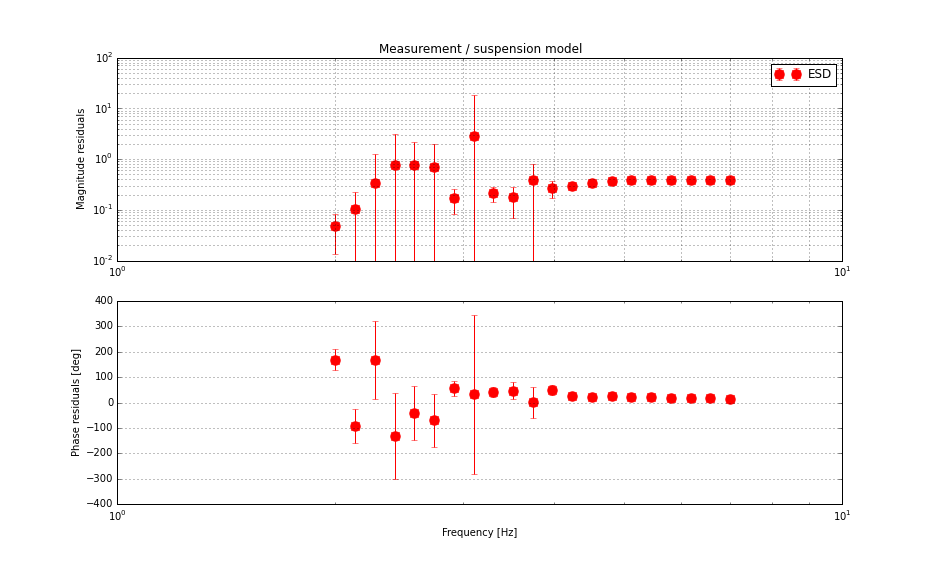Sudartian, Darkhan, Jeff, Kiwamu,
On this past Saturday, Sudartian, Darkhan and Jeff did a Pcal sweep in full lock on ETMY in order to complete the series of the calibration measurements we did in the past weekl (alog 18711 for ALS diff, alog 18718 for MICH free swing).
The point of doing three different techniques this time was to get an accurate calibration of the ETMY suspension responses such that we can reliably estimate the optical gain of DARM by measuring a DARM open loop transfer function. Again, we did not evaluate systematic error yet and all uncertainties come from statistical errors. Here is the result:
- - - -
ETMY ESD was weaker than the suspension model by 0.3932 +/- 0.0018
This corresnonds to an ESD force coefficient of 7.864e-11 +/- 3.7e-13 [N/V^2]
If we scale this value to 1 mHz, the actuator response of ESD is 5.951e-15 +/- 2.8e-17 [meters/counts]
- - - -
[The measurements]
In full lock, they swept the Pcal line from 2 to 7 Hz with an amplitude of 3e4 counts at PCALY_SWEPT_SINE_EXC and with the same number of data points as the other two methods. This basically gives us counts/meters calibration at DARM_IN1 which is of course suppressed by the DARM loop. Then they measured a transfer function from ETMY ESD to DARM_IN1 within the same lock stretch. Since we already knew the suppression from the previous Pcal sweep measurement, dividing the ETMY drive transfer function by the calibrated Pcal transfer function give us the ETMY response. Here are the plots showing the main results:
As you can see the measured ESD response was weaker than what the suspension model predicted by a factor of roughly 0.4. This is consistent with the other two methods (alog 18711 and alog 18718). Since the Pcal actuation strength was not big enough to have a good signal-to-noise ratio, the data below 4 Hz had low coherence and this is exactly the reason why the error bars are so large below 4 Hz. In addition, it seems that there is an phase offset of about 25 degrees in the measurement. This may be an indication of inaccurte suspnsion model in the Pcal calibration where they use a 1 / (1 + if)^2 response for the suspension response.
For completeness I post some other relevant plots:
- Pcal excitation, monitored at DARM_IN1 (3rd attachement)
- ETMY L3 drive to DARM_IN1 (4th attachment)
The analysis codes, data, and figures can be found in the usual svn place:
- aligocalibration/trunk/Runs/PreER7/H1/Measurements/PCAL2DARMTFs
- aligocalibration/trunk/Runs/PreER7/H1/Scripts/PcalETMs
- aligocalibration/trunk/Runs/PreER7/H1/Results/PcalETMs





